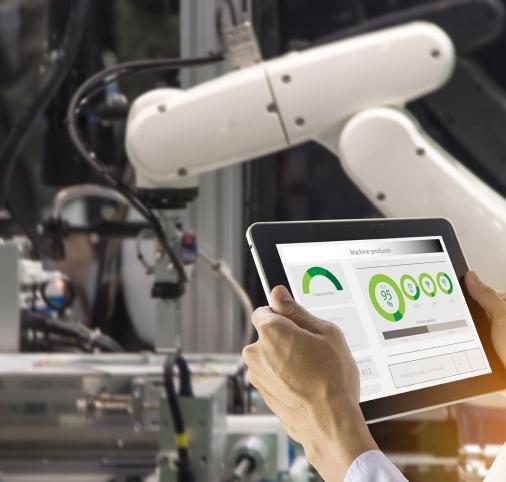Understanding Alternative Data: Types, Sources, Collection, and Usage
Learn what alternative data is, where it comes from, how it opens up new layers and opportunities for investors or businessmen. Learn more from a DataOx expert.
Ask us to scrape the website and receive free data sample in XLSX, CSV, JSON or Google Sheet in 3 days
Scraping is the our field of expertise: we completed more than 800 scraping projects (including protected resources)
Table of contents
Estimated reading time: 10 minutes
Introduction
For years, financial organizations all over the world were looking for an effective and reliable way of gathering financial information to help them make well-reasoned investment decisions and develop strategies accordingly.
However, traditional sources of information—sales figures, SEC filings, financial statements, and the like—though useful, rarely provide a comprehensive and sufficient overview. To fill the gaps, some companies started to collect, cleanse, analyze, and interpret the data provided by nontraditional sources—sensor inputs, public records, new websites, customer feedback, web traffic, and much more.
Such a usage of previously unexploited data resulted in coining a new term—“alternative data,” and these sources are usually outside the company’s control.
The insights gained as a result of alternative data analysis help forecast events long before they become known and allow finance companies to figure out the best investment prospects. In this article, we are going to take an in-depth look at alternative data, its sources, the ways to gather it, its benefits, and the best-use cases.
What is Alternative Data?
No comprehensive list of alternative data point types exists since these data types are extremely variable and often custom-selected to match certain aims. To answer the question “What is alternative data?”, we’ll mention its major forms:
- Site content,
- Social media sentiment,
- Mortgage data,
- Credit card transactions,
- E-commerce buying habits,
- Geolocation details,
- Booking information,
- Sensor data,
- Retail inventory data,
- Satellite imagery,
- And much more.
Is Alternative Data Worth the Effort?
In short, yes. In more detail, we should admit that initially, alternative data prompted lots of skepticism, but in time, more and more investing companies realized the potential benefits and turned to it more and more often. More than that, alternative data is now used in the mainstream finance, data, and services sectors.
In the last decade, many alternative data companies, brokers, and aggregators entered the data analysis market, providing the sought-for alternative data to investors and anybody who needed it. Even though this data is not so readily accessible or as structured as traditional forms, it can provide insights that are impossible to gain through traditional data sources. Such data opens up new layers and opportunities for well-informed businesspeople.
Still, companies must select the right assets to gain valuable information from this data, and that is a complex challenge. However, modern data collection methods—web scraping and data parsing in particular combined with innovative technologies—perfectly cope with the task, providing early insights. In fact, alternative data analysis has flourished due to the augmentation of data collection methods and the enhancement of big data processing technologies, along with the advancement of machine learning, AI, and IoT technologies.
Over four hundred alternative data companies operate in the market today, and the demand still grows, since 80% of investors already admit they turn to such information for granular insights before making their final decision. According to J.P. Morgan, investments in alternative data are likely to annually grow by 20% to 30%.
In the past five years, the number of alternative data specialists has grown by 450%.
Number of Alternative Data Providers
Types of Alternative Data
The types of alternative data are multifaceted, and the major categories are:
Web data
Web traffic details, prevalent web searches, click-through rates, demographics information, and much more belong to web data. It’s useful for evaluating the effectiveness of advertising campaigns, for instance, or analyzing the popularity of a product or a website. Excellent insights for e-commerce, retail, sales, and market research can be gained from such information.
This kind of data includes posts on social media, user feedback, comments, and reviews. Reactions to news, advertising, and announcements are also in this category. Coming in the form of text content, videos, or images, this data is usually unstructured and requires preprocessing. However, it’s useful for getting an idea of the current market trends, attitudes to events, product releases, or brand vitality.
Geolocation details
The information received from electronic devices aimed to track and identify someone’s physical location is geolocation data. Received by means of GPS, Bluetooth, or Wi-Fi signals, it’s essential for well-weighted, location-based decisions. It may identify the areas with the most demand for certain goods, services, or activities for expanding business, for instance.
Card transactions
Monitoring retail revenue is possible through debit and credit card transactions. In addition, it can provide insights about the time, frequency, and regularity with which people pay their bills, helping loan companies, for example, decide if the client is going to make the due loan payments on time. However, as accurate and insightful as it is, this kind of alternative data has a drawback—it’s expensive to be licensed.
Email receipts
The receipts obtained on a product or service delivery via email are useful for retail revenue, market trends, and even market share values tracking.
Transactions at the point of sales
POS transactions give an understanding of sales volumes, processes, and price trends and also help detect consumer behavior and preferences as well as certain product popularity.
Satellite images
Modern satellites and drones provide data that has gained more and more popularity. Images obtained through these technological devices can be processed to extract the information that interests a researcher. The images of parking lots, for example, may give businesses an understanding of the economic state in a certain area.
Weather
The data related to weather condition patterns is similar to satellite info and can be vital for a wide range of economic decisions. Collected from multifaceted sensors, it can be analyzed to figure out what kind of harvests to expect in a certain region and how much. It can also indicate other resources available in a specific area.
Most Accurate/Insightful Dataset
Where Does Alternative Data Come From?
According to J.P. Morgan estimations, the total data generated globally will be almost 165 ZB by the year 2025, and 90% of the world’s data was produced in just two recent years. So the influence of information is beyond measure. At the same time, technology now benefits the connection between humans and businesses more than ever before.
But how is alternative data produced?
We’ll mention three major ways:
By individuals
The internet, social media, and the usage of web and mobile apps reveal great opportunities for individuals to generate valuable sentiment data for consumer behavior studies. Most of it is, however, unstructured and tough to process.
By businesses
Business processes often have a by-product called “exhaust data,” and that is one of the forms of alternative data. It often comes as credit card and commercial transaction records, supply chain details, banking records, government and corporation information, and more. Such data is often structured and can provide valuable insights into company business performance.
By sensors
The third important source of data is transportation sensors. CCTV, POS systems, Wi-Fi signals, and even parking lot sensors provide a host of vital information. Besides, satellites and geolocation devices generate geolocation alternative data that can be used for business development in a certain area or destination.
How to Obtain Alternative Data
Speaking about the usage of alternative data, we cannot pass over the major ways in which it’s obtained:
Web scraping
Internet data scraping, parsing, or harvesting is a widespread technique to access and fetch the information scattered over the World Wide Web. This process involves browsing web pages and extracting the necessary details from these pages. The gathered data is then saved to spreadsheets or databases and can be easily analyzed or interpreted.
Prior to the digital age, getting high-quality business insights was a mammoth task. However, nowadays, a wide range of companies provide web scraping software solutions development and services. Everyone can choose a vendor according to their business-specific needs, tasks, and personal preferences. It’s always better to trust data fetching, especially alternative data collection, to experienced experts and teams who can do it accurately, correctly, and effectively. With our expertise and technical background, DataOx is always ready to harvest challenging alternative data for your various tasks.
Raw data acquisition
Raw data stands for the unprocessed data that can be fetched from various sources like sensors, terminals, and similar devices. Commonly available in the raw format, it requires further cleansing, noise removal, and processing.
Third-party licensing
Certain companies receive licenses for “exhaust data” recovery like credit card and POS transactions. The companies then process this information and store it in easy-to-use formats. Later on, the data is sold to other organizations. The top alternative data companies provide data primarily to investors, and the major players in this field are YipitData and iResearch.
The Benefits of Alternative Data Usage
Why has alternative data become so popular lately? Let’s check the major benefits it offers.
The key advantage to mention is obviously saved time for money managers, who receive the opportunity to get generalized data from the interested sources for more accurate insights and well-balanced decisions.
What is more, analysts can monitor the market in real time, receiving better regular insights about its conditions based on larger and more dynamic datasets.
Alternative points of view and unexpected insights
The great abundance of data sources, counted in thousands, gives analysts access to variable viewpoints they would possibly fail to consider using just traditional information sources. Consequently, the experts get the opportunity to spot the unforeseen insights earlier, generate innovative ideas for investments, and even predict the future moves of the market.
Transparency of company performance
Portfolio managers can commonly provide historical overviews of a company’s performance based on quarterly earnings, financial reports, and fiscal statements. At present, integrated with alternative data, this information allows investors and portfolio managers to receive real-time indicators of company performance.
Competitive advantage
Possessing alternative data allows companies to win the competition over their rivals playing in the same field. Thus, using it, you can gain an understanding of possible future deals and their consequences in advance.
Over 80% of companies use alternative data in one form or another to create their investment strategy.
How is Alternative Data Exploited?
Investments
The most popular application of alternative data is in the sphere of investments. Lots of companies use it to find new sources of alpha stocks. The most common alternative data use cases circle around indirect forecasts.
Some firms, like Orbital Insight, for instance, continuously monitor parking lots with the help of satellite imagery and then sell the data of over 260,000 parking lots to those who are interested in such information for their business optimization. Knowing where people are shopping and when can provide an early insight into sales revenues before the quarterly returns are calculated.
Likewise, gathering data on truck movements in a certain region, country, or along a certain route can prompt favorable investment prospects in the sphere of logistics.
Other organizations like Yodlee gather data about credit and debit card transactions and sell that to hedge funds. Such data is helpful not only for discovering retail trends and understanding spending habits, but it also can be helpful for fraud detection. The other types of alternative data that hedge funds are often interested in are traffic patterns and customer sentiment. Occasionally specialized data is required to make more accurate predictions in certain industries.
Retail and e-commerce
Scraping user posts from social media sites reveals a host of data for consumer sentiment analysis. Various brands and analysts widely use this method to gain insights into trending topics and popular events.
Economics and politics
Predicting geopolitical risk has been made easy thanks to alternative data analysis.
Monitoring governmental changes, you can predict trade or tariff changes, currency fluctuation, tax valuation, and even environmental regulations.
Once a stock research company informed their clients that they spotted Occidental Petroleum Corporation’s Gulfstream V at the Omaha airport, speculating that they were possibly negotiating with Warren Buffet’s Berkshire Hathaway Inc. Soon after that, Buffet announced he had invested $10 billion in the company. It’s a perfect illustration of how monitoring the movements of business leaders’ private jets can help you make the right investments.
Since alternative data always comes in large amounts, it’s often referred to as a subset of big data that requires processing before any predictions are made. The process of web data collecting, normalization, and integration now allows companies to make sense of all this big data and spot potential areas of concern faster and more efficiently than ever before due to the advanced techniques of machine learning, AI, natural language processing, and much more.
Conclusion
Having a data advantage can make an enormous difference for your business and finances in the contemporary hypercompetitive landscape. Even though hedge funds were the pioneers in alternative data adoption, an almost infinite number of applications for it exist in a myriad of industries.
It’s absolutely clear that various businesses worldwide can massively profit from alternative data in the coming years, and as a web data scraping company with years of experience, DataOx is eager to provide you with the alternative data at the necessary level with advanced research and innovative strategies of data integration.
If you want to get more details about our alternative data services, schedule a free consultation with our data expert.
Publishing date: Sun Apr 23 2023
Last update date: Tue Apr 18 2023





Social sentiment